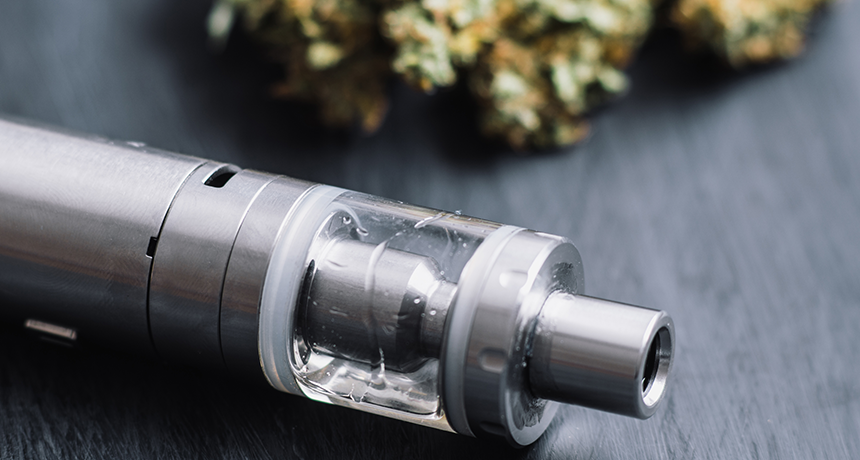Teen vaping of marijuana raises concerns about addiction
This experimentation puts developing brains at risk

The first nationwide estimates of teens’ and preteens’ use of marijuana in e-cigarettes raise concerns about addiction and long-term health risks.
Dmitry_Tishchenko/iStockphoto
A new study gives the first U.S. estimates of teen and preteen vaping of marijuana — and the rates are relatively high. The findings raise concerns about addiction and other long-term health risks, researchers say.
E-cigarettes are battery-powered devices that vaporize liquids. Most e-liquids contain nicotine. That’s the chemical that makes tobacco addictive. But the devices also can vaporize dried marijuana leaves or buds. Or they can use oils or waxes made from the plant’s main active ingredient, THC. That’s short for tetrahydrocannabinol.
In fact, several things might make vaping marijuana appealing to kids, observes Bonnie Halpern-Felsher. For instance, she notes, vaping leaves less of the drug’s telltale odor than does smoking it. That may encourage teens to try it, she says. Halpern-Felsher works at the Stanford University School of Medicine in California. She was not involved in the new study. But as a developmental psychologist, she studies why teens and young adults make risky choices, such as using drugs.
Marijuana also may be easier to get as it is legal in some states for adults to buy and use this drug. And, she notes, changing public views may make its use seem more socially acceptable.
Millions of kids at risk
E-cigs are the most widely used tobacco products among U.S. youth. In contrast, data on teen vaping of marijuana had been fairly scant. So a team from the Centers for Disease Control and Prevention (CDC) in Atlanta, Ga., analyzed a survey of kids from around the nation. This 2016 National Youth Tobacco Survey included 20,675 sixth- to 12th-graders. The students reported whether they had used e-cigs. They also reported what substances they had vaped.
Nearly nine in every 100 of the students reported vaping marijuana. Among those who had used e-cigs before, the number rose to more than 30 in every 100. Based on the survey results, the researchers estimate that nearly 1 in 3 U.S. high school students who use e-cigs have already vaped pot. That would amount to some 1.7 million teens. For middle schoolers, they estimate the rate is nearly 1 in every 4 who have vaped, or about 425,000 kids. The team reported its findings online September 17 in JAMA Pediatrics.
Halpern-Felsher isn’t too surprised by those numbers. Indeed, she says, the number of youth who vape “weed” is concerning. “You’re basically using it in a very strong form.” The marijuana available today often contains a higher dose of the active chemicals than in the past. Plus, the THC level in vaporized oils and waxes can be four to 30 times as high as that in dried marijuana.
And, adds Halpern-Felsher, teens face a special risk from the drug. Because their brains are still developing, she notes, “Youth are at a very vulnerable time.” That’s one reason they are at a higher risk for addiction than are adults. What’s more, damage to brain function from the drug can be worse during adolescence. Marijuana use has been linked to depression and memory problems. Once marijuana is introduced, “you’re altering the brain forever,” she says.
Overall, e-cig use among students is rising. That’s the finding of another recent CDC report. In 2017, nearly 12 in every 100 high school students and 3 in every 100 middle schoolers reported vaping. Scott Gottlieb is the head of the U.S. Food and Drug Administration (FDA). This government agency regulates tobacco and other drugs. Gottlieb has raised concerns that teenage vaping has become a public health crisis. On September 12, he gave a speech at the agency’s headquarters. He announced that the FDA would crack down on stores selling e-cigarettes to kids, which is illegal. And he warned e-cig makers that flavored liquids could be banned.
Concluded Gottlieb, “We see clear signs that youth use of electronic cigarettes has reached an epidemic proportion.”







